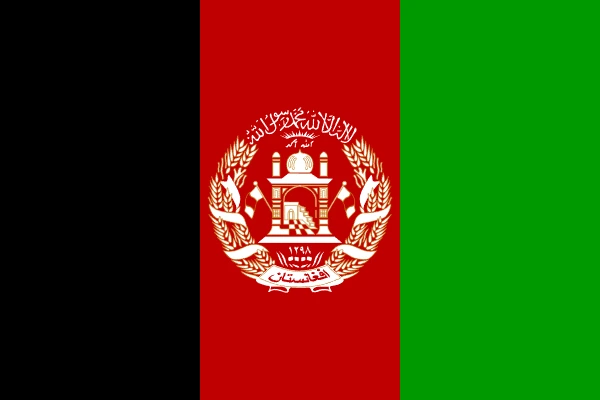Afghanistan Travel Guide
Discover Why You Should Visit Afghanistan
Why Visit Afghanistan?
Afghanistan is a land of breathtaking landscapes, ancient civilizations, and deep cultural heritage. Despite its turbulent history, it remains a destination with immense historical depth and resilient traditions. The country offers an authentic travel experience for those interested in heritage, mountain adventures, and understanding diverse cultures.
From the Bamiyan Valley’s archaeological wonders to the highlands of the Hindu Kush, Afghanistan is ideal for the intrepid traveler seeking meaningful encounters and natural beauty.
Ideal for: Adventure travelers, historians, cultural enthusiasts, and researchers.
Must-Know Facts
Capital/Major City: Kabul
Language(s): Dari and Pashto
Currency: Afghan Afghani (AFN)
Best Time to Visit: March to May and September to October for moderate weather
Fun Fact: The ancient Silk Road passed through Afghanistan, making it a crossroads of civilizations and trade for millennia
Top Things to Do
Visit the archaeological site of Bamiyan, once home to the famous Buddha statues
Explore the historic gardens and mosques of Herat
Discover the Blue Mosque in Mazar-i-Sharif, an architectural and spiritual marvel
Hike the Wakhan Corridor for remote mountain adventures
Stroll through the old bazaars and learn about traditional crafts
Local Culture & Lifestyle
Afghan culture is shaped by tribal traditions, Islamic values, and centuries of history. Hospitality is a cornerstone of Afghan society, with guests often treated with great honor and generosity.
Family and community bonds are strong, and many daily activities are centered around shared meals, storytelling, and religious observance.
Art, poetry, and music play a vital role in cultural identity, passed down through generations.
Food & Drink Highlights
Street Food: Mantu (dumplings), bolani (stuffed flatbread), kebabs, chapli kebabs
Restaurants: Serve qabuli pulao (spiced rice with lamb and raisins), ashak (leek dumplings), stews, and naan
Drinks: Green tea, doogh (yogurt drink), cardamom-infused coffee
Desserts: Sheer khurma (sweet milk pudding), firni, halwa
Main Dish & Culinary Symbols
Signature Dish: Qabuli pulao, a fragrant rice dish with lamb, raisins, carrots, and almonds
Common Ingredients: Lamb, rice, yogurt, chickpeas, cumin, coriander, saffron
Culinary Culture: Meals are communal and often eaten sitting on the floor, reflecting deep-rooted customs of family unity and hospitality
Symbols & Icons of the Area
Natural Icons: Hindu Kush Mountains, Band-e Amir Lakes, vast valleys and deserts
Cultural Icons: Carpets, calligraphy, minarets, the former Bamiyan Buddhas
Hidden Gems & Off-the-Beaten-Path
Band-e Amir National Park, Afghanistan’s first national park with turquoise lakes
Panjshir Valley, a scenic and historically significant mountain region
Nuristan, known for its distinct culture and isolated location
The Citadel of Herat, a well-preserved fortress with stunning views and exhibits
Shopping & Souvenirs
What to Buy: Handwoven carpets, lapis lazuli stones, embroidered fabrics, traditional jewelry, ceramics
Where to Shop: Local bazaars in Kabul, Herat, and Mazar-i-Sharif
Getting Around
Public Transport: Limited to shared taxis and minibuses in cities
Private Drivers: Often arranged for long-distance or secure travel
Domestic Flights: Available between Kabul and major cities
Walking: Common in rural and village areas, often necessary for remote sites
Travel Tips
Travel with a reputable guide or organization familiar with local customs and current security situations
Dress conservatively and respectfully, especially in rural or religious areas
Respect local traditions and avoid sensitive political or religious discussions
Carry cash, as credit card facilities are rare outside of major urban areas
Where to Stay
Budget: Basic guesthouses and family-run accommodations
Mid-range: Hotels in Kabul, Herat, and Mazar-i-Sharif with modern amenities
Luxury: Limited availability, primarily in secure compounds or diplomatic zones
Unique: Traditional mudbrick guesthouses or community-run lodges in remote areas
Sample 4-Day Itinerary
Day 1: Arrive in Kabul, visit the National Museum, Gardens of Babur, and local markets
Day 2: Travel to Bamiyan, explore the cliff-side niches and surrounding countryside
Day 3: Hike around Band-e Amir Lakes and enjoy the peaceful mountain atmosphere
Day 4: Return to Kabul or extend your trip to Herat or Mazar-i-Sharif for more cultural exploration



0 Comments